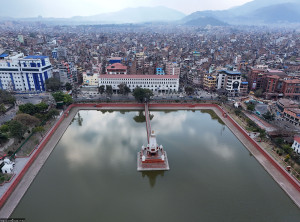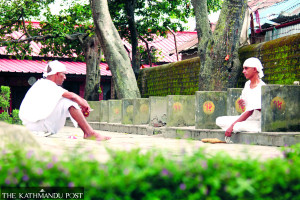Money
Yarsagumba collectors say buy now, pay later
Collectors of the prized Himalayan herb yarsagumba have sold their harvests to traders without setting the price after a three-month-long stalemate.
Basant Pratap Singh
Collectors of the prized Himalayan herb yarsagumba have sold their harvests to traders without setting the price after a three-month-long stalemate.
Locals of Bajhang district, for whom gathering herbs is a major source of livelihood, have not received payment from the traders even though a month has passed.
The caterpillar-fungus cannot be preserved for long periods, and this made collectors anxious to unload their stocks even without agreeing on a price. The expensive herb is also a target for thieves.
“We collect the fungus in May, and it is difficult to preserve it beyond September,” said Ghuran Bohara, a local of Kanda, Bajhang. “If yarsagumba gets damaged, we get a very low price for it. Therefore, we sold the fungus to traders without fixing the price.”
The high value of the fungus has also made it dangerous to keep in the house. “We can’t store things of such high value for a long time, and we had no option but to trust the traders,” said Bohara. “We might get a lower price for selling the fungus without fixing the price, but it is better than getting nothing due to theft or damage.”
Traders said that they had not yet found buyers among Chinese traders, their main clients, and so could not pay their suppliers, said Bohara who sold 1.5 kg of yarsagumba to a local trader.
Traders of Bajhang ship the fungus to Kathmandu to sell to Chinese buyers of medicinal herbs. “As the Chinese buyers are yet to fix the price of the fungus, we have not paid the collectors,” said Dan Bahadur Surmeli, a local businessman.
“We pay the collectors whatever money we get from the Chinese traders after taking our cut. This is how we have been doing business from the past.”
Located in far west Nepal, Bajhang is one of the poorest districts in the country and occupies the bottom rung of the human development index, meaning income levels are low, and many people are not educated and do not have access to quality healthcare services. As a result, it is customary for entire families to leave their homes during the yarsagumba picking season and spend weeks in the highlands where the herbs grow. The money they make by selling their yarsagumba harvest puts food on the table throughout the year.
Yarsagumba is the world’s most expensive medicinal fungus, and is used to cure anemia, chest and lung infections, tuberculosis, Hepatitis B and kidney and liver diseases. It can fetch as much as $100 per gram on the Chinese market, making it more expensive than gold, according to reports.
This is the reason why hordes of collectors rush to the hills during the yarsagumba collection season. There are examples of pickers earning enough to purchase real estate in the district headquarters and the relatively more prosperous southern plains.
Many have also stopped going to India as seasonal migrants to do menial jobs.




 25.6°C Kathmandu
25.6°C Kathmandu














